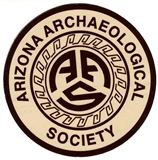

Site Restoration and Stabilization
The purpose of this section is:- To promote sharing of information between Arizona Archaeological Society (AAS) members on the restoration and Stabilization projects being pursued by AAS chapters and their members.
- To provide a source of information for non-AAS members who may be interested in Stabilization and restoration and who may want to join AAS and participate in AAS projects.
- To provide a forum to exchange ideas and experiences related to Stabilization techniques, materials, soil amendments, and other related topics. Exchanging ideas and experiences is a great way to expand the knowledge base of our members and others who may access this web site. Bulletin Boards will be used for this exchange.
Underlined terms have definitions in the Glossary page.
In addition to Restoration and Stabilization this web page will include discussions on preservation, reconstruction and rehabilitation.
This web page will be organized to have two sections; Prehistoric and Historic. Discussion pertaining to a specific project will be included under the appropriate section. AAS members who are involved with a project which is not sponsored by one of the AAS chapters can submit information on their project. Prehistoric projects seem to dominate for AAS chapters, but there are members involved with historic projects as well. To be included on this web page the project should be located in Arizona. Everyone is encouraged to submit e-mail about projects, suggestions and comments to Jim Britton.
Prehistoric and historic sites are non-renewable resources. Once a site is destroyed or lost due to erosion, the original construction fabric is lost forever. There can only be an attempt to reconstruct the fabric as it had existed based on whatever information can be obtained about the original site.
If plans call for the site to be developed as a park providing educational and recreational activities for the public, a detailed comprehensive Stabilization plan must be prepared. For example, deciding how many and which walls are to be left exposed is very important. The amount of exposed wall fabric determines how much future maintenance effort will be required. Exposed walls have many agents of deterioration affecting the preservation of its fabric. These agents will be described in the discussion of Stabilization and restoration for each site on this web page.
Information on specific projects or terminology